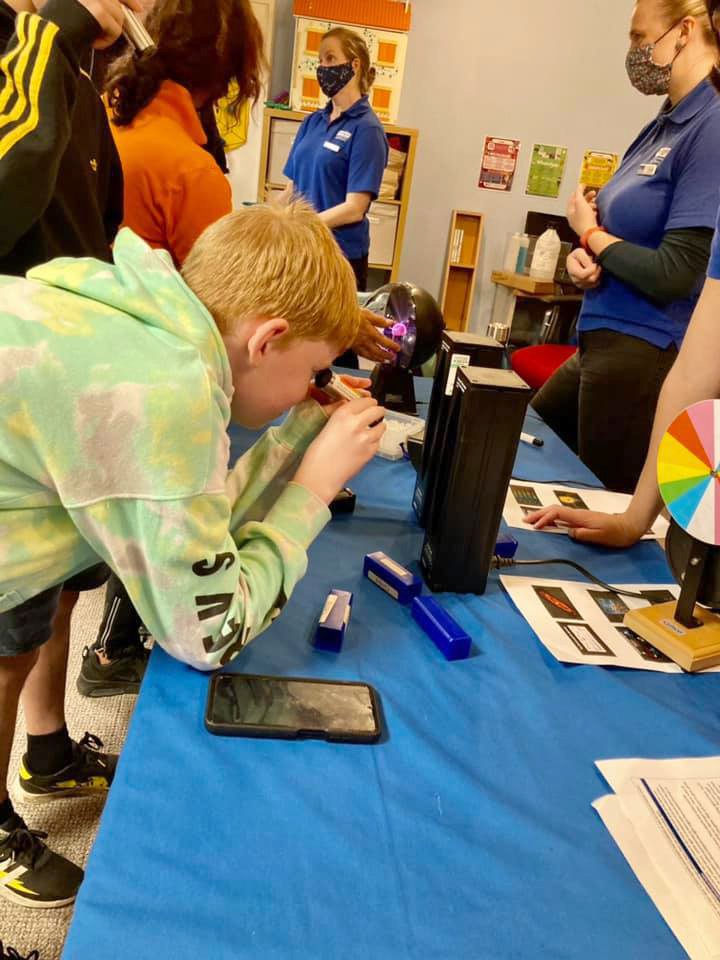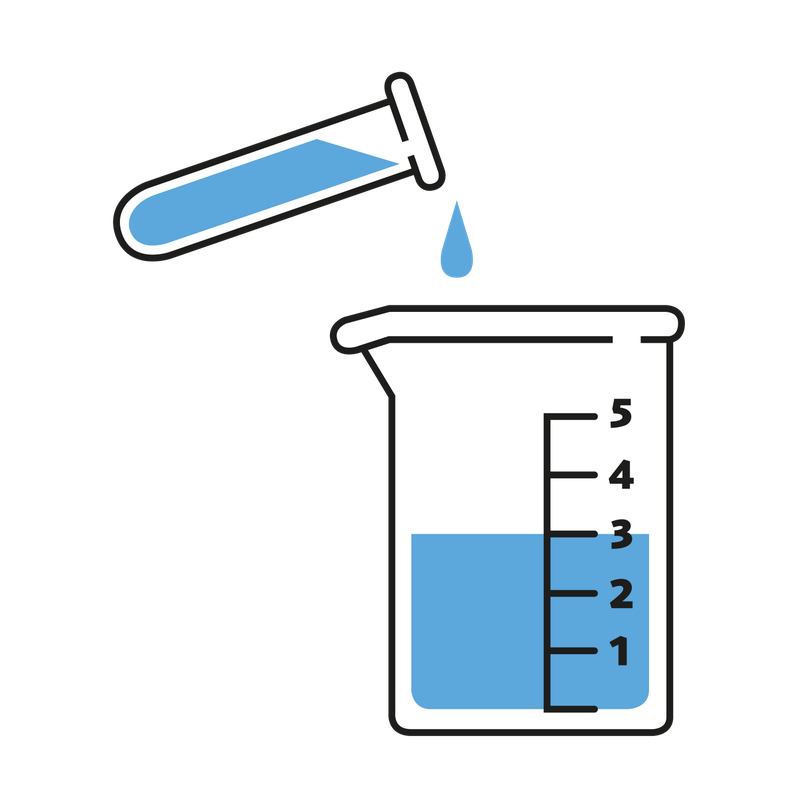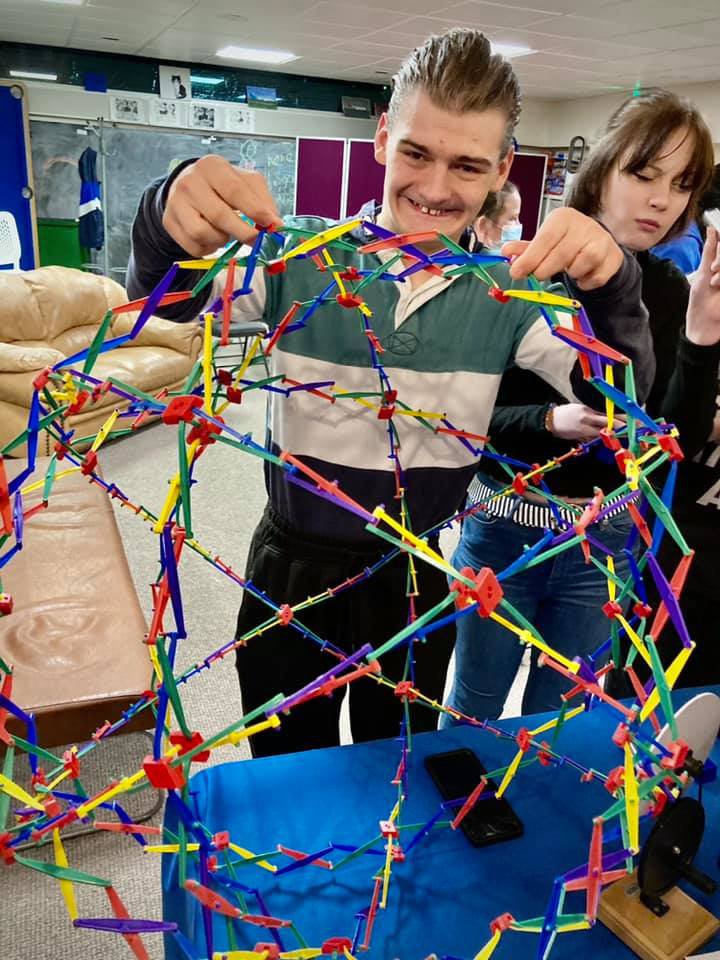Making Space for Autism
Jodrell Bank Discovery Centre (JBDC) worked with a local charity called Space4Autism (S4A).
Who did you work with?
We worked with a local charity called Space4Autism (S4A). S4A provides help and support to over 4000 members living with Autistic spectrum conditions. They hold regular meetings for parents and carers and all age groups of people living with autistic spectrum conditions, as well as offering special events and days out for their members. Over the last 15 since its inception, S4A has become one of the biggest charities in Cheshire East.
Had you worked together before?
Our relationship with S4A started early in 2021 when members of the S4A team delivered several workshops to members of the Jodrell Bank Discovery Centre (JBDC) team, to improve our understanding of autistic spectrum conditions and how we might adapt and evolve our visitor experience to make it as accessible as possible to individuals with such requirements.

What goals, values or priorities did you share with your partner?
At JBDC we want each of our visitors to leave with a sense of awe and inspiration at the science we do and the history of the observatory. As we look forward to the opening of our new First Light Pavilion, it is more important than ever that we heed the accessibility requirements that our visitors may have, to ensure everyone has the most positive experience possible.
S4A shares that aspiration, both in respect of the group days out to JBDC that they hope to organise in future, and also their confidence in recommending JBDC as a destination to the families with whom they work. Being a local charity, S4A has a vested interest in assisting us in becoming more accessible to visitors with autism as opposed to a national charity which might not have such a granular focus on and practical knowledge of what the specifics of our operation and the improvements that we hope to make will mean for the local autistic community. We intend to foster an ongoing collaboration with S4A, extending beyond the scope of Explore Your Universe 4.
Can you summarise the aims of your project delivery in 2 (ish) sentences?
Our key objectives were to establish a baseline of the experience of visitors with autism to Jodrell Bank and as a result to consult with the community about how the visitor experience could be improved, using this to create an action plan of immediate and longer term actions to put into practice. We did this by undertaking a ‘mystery shopper’ exercise and obtaining feedback from groups and families visiting the centre. We also sought to understand more clearly the requirements of an autistic audience joining our science shows and talks, by delivering sessions and evaluating how they were received and how our approach may need to be adapted to suit this particular audience.

How co-produced was your programme?
- Information shared (the offer is decided and provided by you as the lead partner and people join to hear information)
- Consultation (the community partner/participants choose from a range of options, involving listening, feedback and discussion, but broader project objectives and delivery are led by you)
- Deciding together (community partners/participants support the creation and design phase, bringing new options and joint decision-making. Delivery and evaluation/reporting is led by you as the lead partner)
- Acting together (involvement of community partner/participant at each stage - from the planning and design, to the delivery and evaluation – with shared decision-making that forms a partnership to carry out the full programme)
- Supporting independent community interest (supporting partner agency, including offered funding, advice, and support to develop the independent ideas and agendas of the community partner).
Can you note down some of the benefits and challenges to working this way?
The main benefits of working in consultation with S4A were their subject matter expertise and their position as a hub for the local autistic community which supported us in beginning to build a relationship with them. Although we’d had some training in the requirements of individuals with autism, the vast experience of the staff at S4A was invaluable as we designed our outreach activities. We were very mindful of inadvertently delivering an experience that would be off-putting or uncomfortable for the audience in any way, and the support of S4A ensured that was not the case.
Similarly, practical help from S4A ensured that the audience didn’t perceive themselves as ‘guinea pigs’ on whom we were trialling our engagement activities. They facilitated the outreach sessions during scheduled weekly meetings, and let the guests know what to expect, as well as organising the distribution and collection of feedback forms from the mystery shopper participants. They were able to do this much more effectively than if we’d attempted to contact the target audience ourselves independently.
As collaboration is central to this project, the benefits were accompanied by challenges, in particular to the timeliness of the progress of the project; S4A is a busy organisation, with additional demands on their resource as a result of Covid-19. Consequently there were times during the project where our progress in scheduling, planning and designing the content of the sessions was delayed until we had been able to liaise with them. It was necessary for us to remain fluid in how we hoped to achieve our objectives, and so the project evolved quite organically, very much in dialogue with S4A. We believe we met our goals and are now much more equipped to offer a great experience to autistic audiences.
What was the science link?
Our outreach sessions at S4A were designed around a narrative of the vastness of space and the necessity to use different methodologies/types of light to explore the mysteries of the cosmos to the full. We linked this with the science that we do at Jodrell Bank. In addition to the more structured talk, we also set up some interactive demonstrations for the attendees to explore on a free flowing basis.

What happened?
We delivered science talks during two scheduled weekly meetings at the S4A premises - one adult and one 14-18 year old group. On each occasion, we spent about 2 hours with them in total, with a 45 minute talk including demonstrations and then some free time in which they could interact with some scientific equipment and ask questions of the engagement team.
The members had been informed that we’d be coming along those nights, but even so we weren’t sure how a science show would be received. We were very pleasantly surprised by the level of engagement of the audience members; the majority of them were more than willing to contribute and take part in the activities on offer, and they had a lot of knowledge that they were keen to share.
A stand out moment came when a child initially refused to believe that the meteorite we took with us was genuine. We gave him a magnet so that he could test it for himself, and when he verified that it was indeed a real meteorite he said his ‘mind had been melted’.
Following the mystery shopper visits, the recurring themes of the feedback were as follows:
- Wayfinding was challenging – including signage around the site, lack of clarity of the entry handout and buildings not being clearly labelled.
- Pre-visit information was inadequate, but the amount of information at the entry kiosk was overwhelming
- Busy areas, such as the exhibitions, were off putting, and would have benefited from quiet respite areas or some indication of which times were generally less busy
From this we have developed the deliverables outlined in later sections of this report, and it was very pleasing that all of the participants were happy to be involved and gave constructive feedback; a reflection of the trust they hold in Space4Autism. One lady in particular was very keen that we didn’t take her feedback ‘personally’ as she’d had a lovely day, and just wanted to help us improve. Another was generous enough to offer their email address in case we’d like to consult with them at a later date. Some of the mystery shoppers added comments to thank us for engaging with them in this way and seeking to improve the accessibility of our site, which was both humbling and energizing.
"It has been wonderful to be able to work with Jodrell Bank over the past 12 months, they have listened and taken note of the feedback our members have given to hopefully make their site more inclusive for people with Autism. The children and adults at our social clubs also loved that Jodrell Bank came over to see us and presented some workshops, we are hoping for more of this in the New Year. Thank you so much for choosing Space4Autism to work on this partnership it’s been fantastic”
Cheryl Simpson at Space4Autism
What challenges might lie in wait for someone wanting to replicate this project?
The challenges lie in the variable nature of autistic spectrum conditions, and the degrees of support that individuals may need. For example, we found that with the groups we had, they were able to enjoy the demonstrations as long as we clearly explained what was going to happen so that no-one would be taken by surprise. However with a different group - one including individuals with different needs - it might have been necessary to be very adaptable with our content, or to rely more heavily on support from the staff at the centre should someone have an adverse reaction.
This also applies to our mystery shopper feedback; the sample size of visitors was fairly limited, and we must be conscious that we don’t take the feedback of 5 families to necessarily speak for the wide range of requirements of individuals on the autistic spectrum. However we did receive a lot of very useful suggestions that, when implemented, will benefit not only visitors with autism but most likely everyone visiting the centre.
Generally speaking, it was determined that in our demonstrations we should revert to surprise (e.g. disappearing test tubes in glycerol, or different coloured chemical flames) rather than shock (e.g. explosions, unexpected flashing lights etc).
We also recognise that there is a significant difference between delivering science shows on the audience’s ‘home turf’ as we did during the project, and delivering on site engagement, as will most often be the case. We benefited from a controlled environment and the assistance of regular S4A staff, whereas at JBDC there will be the added complications of unfamiliar people and surroundings. This will be a far more challenging scenario, but one we are already considering how to address; for example by allowing visitors early access to our auditorium space enabling them time and quiet to gradually become comfortable.
Where there any surprises?
We were most surprised by how willing the groups were to get involved in the activities that we presented, and we were very pleased at how positive those interactions were. There was almost too much engagement at times, requiring some skill from the engagement team to keep everything on track! But the enthusiasm of the audience was great to experience.
How did you capture/measure the impact for this project?
The staff at S4A steered our evaluation methods, as they emphasised that their members don’t like to feel like they are under a magnifying glass.
For the mystery shopper element, we used a simple questionnaire to capture the experiences of the visitors involved. It was pleasing that the responses were very constructive, with several people going as far as offering to consult or provide further guidance as to how we could make the discovery centre more accessible to visitors with autism.
During the outreach sessions, our assessment was observational; during each session someone recorded how the participants were responding to the activities, what was going well and what we might do differently next time. We also filled in reflection journals to capture our assessments of the events. By combining these findings with the mystery shopper feedback, we hope to have a platform for the next stage of this piece of work, which is to launch accessibility friendly early opening days and ‘fidget-friendly’ talks and shows, where there is less pressure on sitting still and being quiet, and more freedom to simply enjoy the experience.
Where is the long-lasting change?
The primary legacy of this project is in the improvement of the accessibility of our site for visitors with autism. It is also in the learning of our staff along the way and our ongoing relationship with S4A as we progress our development work. Although our outreach sessions were successful, this is just the starting point for us to embed autism friendly practices in our day to day work, and provides a platform to build on for any future group visits from/to S4A or similar organisations.
We have taken a number of specific action points away from the engagements we’ve had with S4A so far; we are due to trial an early opening of the centre in December, allowing quiet time for guests to access our exhibitions, as well as delivering a modified science show and providing a relax space for visitors who might find the Centre overwhelming. To accompany this we’re preparing a pre-visit guide to be made available via our website, to give visitors a clearer idea of what to expect from their time at JBDC. This will be the first pilot event, with the objective of scheduling similar on a regular basis in future. Once again we will be seeking feedback from visitors, enabling us to achieve ongoing improvement.
This is also part of a bigger piece of work to assess and improve the accessibility of the JBDC site; mystery shopper feedback relating to navigating around the site, the suitability of exhibition spaces for visitors with and the amount of information we provide to our visitors during their time with us, amongst other things, as well as providing autism awareness training during staff on-boarding, will all be incorporated in to project work in the run up to opening our new First Light Pavilion in 2022.
In addition there are general learning points we’ve gained about working with community partners- the previous phase of EYU4 involved our engagement staff only but this time we have endeavoured to involve as many of our entire JBDC team as we can. This has been beneficial for numerous reasons and we will continue to be mindful of this with projects and partnerships in the future. Also, when embarking on the first phase of EYU4 we began with quite a clear plan, which was then radically altered after discussions with our partner. In contrast, for this current phase we started with clear objectives and an awareness of the kinds of activities that we could offer, in the knowledge that the plan itself would be developed in partnership. This is definitely the approach we would adopt going forward.
Please see below the Evaluation Report: Relationship + Engagement = Impact. Lessons learned from the evaluation of Explore Your Universe 4 written by Jen DeWitt.
